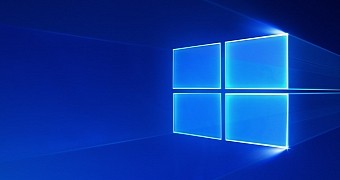Windows 10 S (often referred to as Windows 10 Cloud in the previous months) is now official, and Microsoft is using it to push hard in the education sector where Google and its Chromebooks were the preferred choices for students and teachers alike.
The most important thing about Windows 10 S is the restriction to Windows Store, which means that users won’t be able to install apps unless they are published in the Store. This also means that playing games on Steam or installing Win32 software won’t be possible on a device running Windows 10 S.
A second Windows RT?
This made many consider Windows 10 S just a successor to Windows RT, a failed experiment that was introduced with the Surface RT and continued with the Surface 2 in 2012 and 2013, respectively.
Just like the newer Windows version, Windows RT was limited to the Windows Store, but at that point the number of apps available for download was painfully small. And slowly but surely Windows RT became a platform to avoid not only for OEMs but also for customers, so it was only a matter of time until it failed completely.
With Windows 10 S, Microsoft is trying to avoid doing the same mistake twice, so though there’s a risk this new OS version could also fail to succeed beyond the education market, the company has a backup solution.
Users who purchase Windows 10 S are not stuck to the Windows Store and can always upgrade to Windows 10 Pro either for free, in the case of Surface Laptop buyers, or for a small fee for those who purchase a device from a third-party OEM.
Killing two birds with one stone
At first glance, this is quite a handy feature that many people are going to use, especially because Windows 10 Pro opens the door to so many other activities that can be performed on a device, but it actually shows a little bit more than that.
By allowing users to upgrade to Windows 10 Pro from Windows 10 S and by making the whole thing free (at least on its own devices), Microsoft shows customers that it cares about its buyers. If someone buys a Windows 10 S laptop by mistake, thinking it gets the full power of Windows 10, it can actually get the full power of Windows 10 by simply upgrading.
This was one of the biggest issues with Windows RT. There were lots of people who thought that buying a device running RT would be like buying a device running full Windows 10, but eventually they ended up angry at Microsoft for not making it clearer that the OS was limited to Windows Store apps (which were missing at that point).
And then, by offering an upgrade option, Microsoft has a backup plan and shows that it learned from its past mistake. Windows 10 S might be aimed at the education sector, but it’s actually useful for only part of the education sector. So if the OS itself fails, there’s always the option to upgrade to Windows 10 Pro, so instead of having a huge group of angry customers, Microsoft will have a huge group of customers angry at Windows 10 S, but pleased because they could upgrade to Windows 10 Pro.
It remains to be seen how Windows 10 S will sell beyond the education market, but at the moment, it just looks like Microsoft is playing the right card this time.

 14 DAY TRIAL //
14 DAY TRIAL //